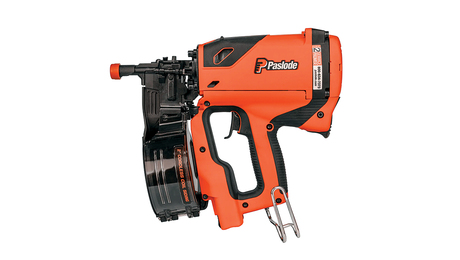We are building a home in rural California & considering a multi-fuel waterstove for infloor radiant heat, hot water, & swimming pool. Taylor makes a unit that uses wood and, as backup fuel, diesel. Would appreciate hearing from anyone with experience with this type of heating.
Discussion Forum
Discussion Forum
Up Next
Video Shorts
Featured Story

The Paslode cordless siding and fencing nailer drives fasteners reliably without the hassle of hoses or compressors.
Featured Video
Builder’s Advocate: An Interview With ViewrailHighlights
"I have learned so much thanks to the searchable articles on the FHB website. I can confidently say that I expect to be a life-long subscriber." - M.K.














Replies
We looked into this for my grandfather who lives on a 160 acre tree farm in Oregon. When consulting with his neighbors who tried it, they all said not to bother - too smoky, too inefficient. He decided to stick with a plain ol' wood stove and a pellet stove for backup. Apparently the inefficiency comes from the fact that it is always burning, even when not heating. The smoke comes from the system closing the damper way down when not heating. Apparently there are several of those stoves sitting dormant in his "neck of the woods," replaced by electric baseboard. And this is from people who have more free wood than they could ever hope to burn...
Have had a 6 ft triangular water wall FP in 5000 sq ft house for 31 years, 29 of those it was sole source of heat. Fire to Water to air and forced air distribution. This was a totally home built unit, burned about 14 cords of pallets and alder a year. Wife figured an old Grandma should not have to bundle around that much firewood a year, so put in heat pump, tied into existing ducting.
Biggest advice would be that any internal heat exchange pipes/ wall should be stainless steel, and also close attention to differential expansion. Doubt if any commercial/home units use stainless, so operational life may be short. Started out in ours with sch 40 black iron pipe, replaced pipes at 5 years due to burn thru (ashes, occasional damp wood, and temperature are a potent corrosive), switched mostly to stainless by 10 years ago and no problems. Never any smoke problem, but also have temperature controlled forced air for combustion also which controls smoke.
Good luck.
Thanks for your replies. We too have lots of free wood available, but as we are over 60 & hoping to get older, we're intrigued with the option of backup fuel systems, just in case. We won't have any heating or AC ducts in the house. An interesting web site is http://members.tripod.com/~c-ebert/index-6.html; sounds like they do use stainless steel. Any other thoughts?
We considered Taylor http://www.taylormfg.com/ and Central Boiler http://www.centralboiler.com/home.html for my Grandpa. He liked the idea that he could drive the tractor up to the stove and dump the wood in without splitting it. Although he's 90 years young, he can still split more wood than me in a day, so he decided it wasn't really worth the extra cost and installation effort of the outside stove. He went with the regular wood stove and bought a hydraulic wood splitter. He chose pellet for backup since he can keep a pallet of pellets in his garage for days he doesn't feel like going outside in the rain. I dont think the Taylor multifuel wasn't around when he was looking, or he might have chosen that. He has plenty of diesel around the farm for his logging skidders and bulldozers.
I'll bet you end up usually just letting the diesel burn - its so much more convenient.
Ken
Ken - you're undoubtedly right! Thanks.............